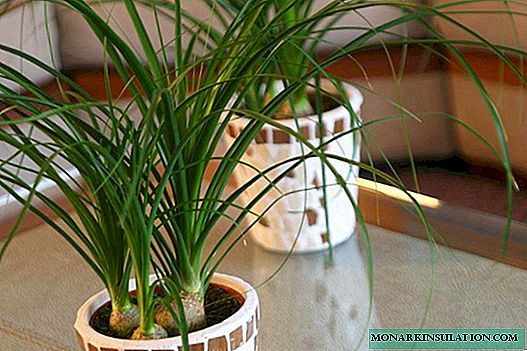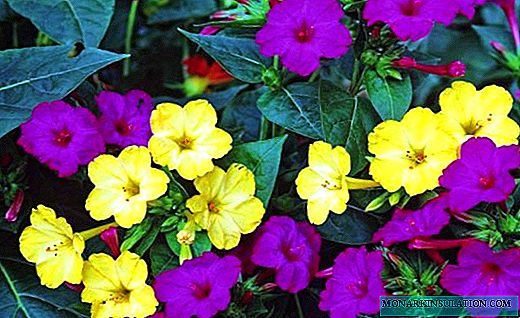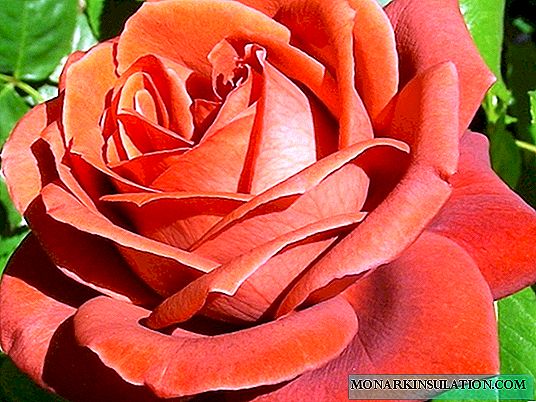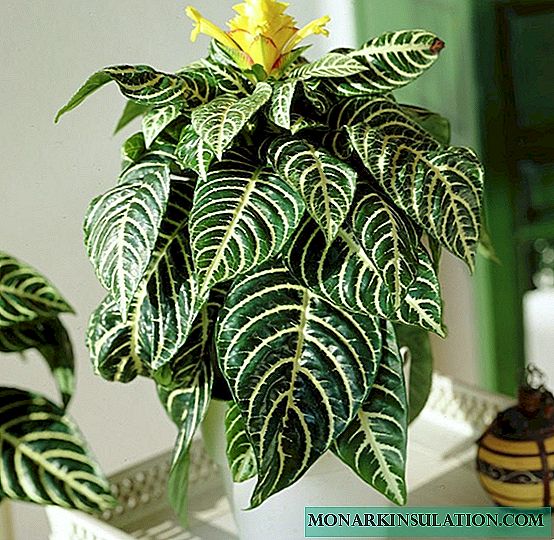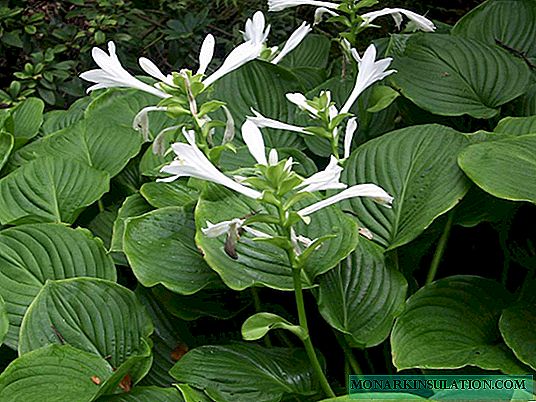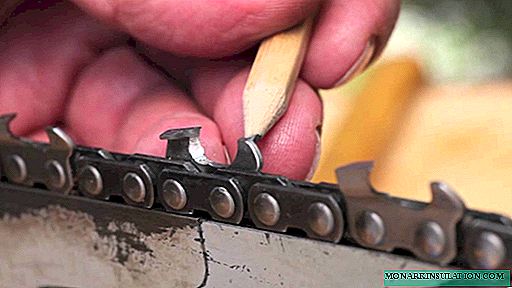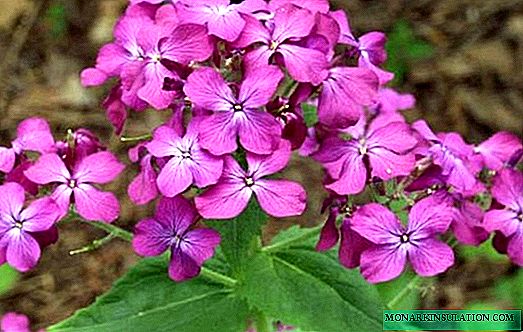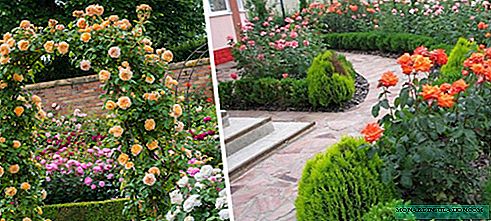Many gardeners grow on their sites shrubs with large inflorescences of white or cream color, having a bright pleasant smell. It is because of this specific and easily recognizable aroma that the bush is called garden jasmine. But from the real jasmine, the plant has only a smell, and the true name of the bush is moth (philadelphus).
Terry jasmine: a brief description, history of origin
One of the varieties of mock orange is terry jasmine, a popular ornamental shrub of the temperate strip.
Terry garden jasmine is a perennial tall shrub, the size of which can reach up to 3 m in height, bred by a French breeder as a result of experiments with common mock up. Hybrid varieties are characterized by double flowers, similar to small roses in a half-open state. There are many different varieties of plants - terry and semi-double with large or small inflorescences, with a different number of petals, which affects the terry of the flower.
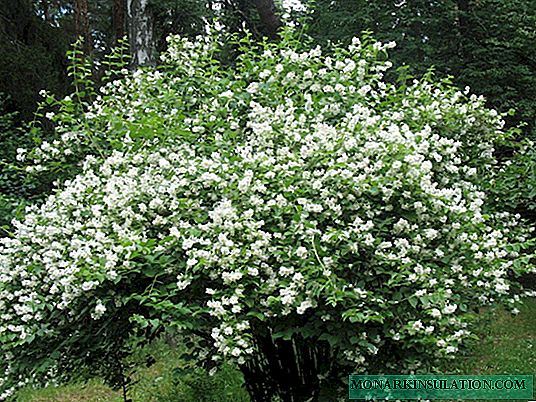
Jasmine Garden (Chubushnik)
Interesting! Terry Chubushnik belongs to the Gortenziev family, and jasmine from the Maslinov family.
Some time ago, chubuki and mouthpieces for smoking pipes were made from shoots of plants, so the name mock-up was assigned to the bush. As a result of breeding work, many varieties of terry jasmine were bred. It is worth noting that non-terry varieties of jasmine have a fragrant aroma, no worse than real jasmine, and take third place in the strength of aroma after a rose and lilac.
Varieties of plants, common varieties
Terry types of jasmine are very popular among gardeners because of their decorative properties. Among 60 breeding varieties, the most common are:
- Virginia;
- Glacier;
- Blizzard;
- Ermine Mantle;
- Shneeshturm;
- Minnesota snowflake;
- Pyramidal;
- Moonlight;
- Coronary.
Interesting! Virginia is the first variety of a hybrid plant developed by Lemoine more than 100 years ago.
Virginia is a shrub up to 3 meters tall with large flowers. Flowering occurs twice a year, subject to proper plant care. A distinctive characteristic of the variety is the presence of a sweet, strong enough flavor, which is not typical for other types of terry mock up.

Sort Virgin
Glacier. Features are manifested in large inflorescences (up to 1.5 m in length) of fragrant flowers. Thanks to such clusters of numerous petals, the plant has an amazing view. After flowering, the inflorescences are unaesthetic, so they are removed from the bush.
Blizzard. A low-growing shrub variety of Russian selection, completely covered with snow-white flowers, reminiscent of snow drifts from afar. It seems that the leaves are covered with snow.

blizzard
Ermine mantle is a variety of low shrubs (up to 1.8 m in height) with a long flowering period, drooping branches are decorated with creamy white flowers with a light strawberry aroma.

Chubushnik Ermine Mantle
Schneyesturm is a fast-growing shrub reaching 3 m in height, with white terry inflorescences, emitting a refreshing fruity aroma, on the dangling shoots.

Jasmine Schneysturm
Jasmine Minnesota snowflake grows to a height of 2 m. This variety of plants is distinguished from the rest by dense terry flowers of a snow-white color, collected in inflorescences of 2-3 pieces.

Minnesota snowflake
Pyramidal is a variety whose shrub reaches three meters in height. It differs from other species in late flowering. The flowers have a crystal white color with a subtle aroma.

Mock pyramidal
Moonlight is characterized by a huge number of small pom pom flowers exuding a delicate strawberry aroma, and the leaves seem to shimmer in the moonlight, so this variety got its name.

Garden Jasmine Moonlight
The main advantage of the crown mock is a pink spot in the middle of the flower, the flowers are usually not double, but large and with a strong aroma.

Flower of the Mockworm
Jasmine garden: planting and care in the open ground
Chubushnik is an unpretentious plant and any beginner gardener can easily cope with planting and caring for the ornamental shrub, observing several agricultural rules.
Landing
First of all, you need to choose the right place for planting a seedling. The plant likes well-lit areas. If you plant it in the shade, the flowering will be less plentiful and short. The shrub does not like marshy soil, so you should take care of drainage from broken brick or gravel. The soil should be loose and rich in fertilizing.
Additional Information! Terry chubushnik does not like waterlogged places with a high groundwater table. In this case, the root system of plants may begin to rot.
Jasmine planting and care in the open ground involves the preparation of a landing pit width and depth of half a meter. At the bottom of the pit lay a layer of drainage and soil mixed with 30 g of nitroammophos. Seedlings are planted neatly, leveling its roots. Soil is sprinkled on top, compacted and watered abundantly. After this, it is recommended to mulch the root zone with a peat layer to retain moisture. Spring or early autumn is the best time to plant a decorative mock-up.

Planting a seedling in the ground
Plant care
Terry jasmine is not capricious in leaving, it is important to prevent increased soil moisture, regularly feed with organic and minerals, and carry out sanitary and shaping trimmings. Mandatory procedures:
- Watering. Water for irrigation should be settled and warmed up. Watering schedule: no more than 2 times a week, and in rainy 1 watering per week is enough. For one full watering, an adult shrub needs 20-30 liters of water. Watering with cool water can cause the development of infectious diseases.
- Weeding. Perform around the trunk of an ornamental plant as necessary, ridding it of weeds. Mulching is carried out several times a season. This technique protects the soil from drying out.
- Top dressing. It is performed only in the 2nd year after planting in open ground. Organic fertilizers (manure) and mineral fertilizers (superphosphates, potassium sulfate and urea) are needed for lush flowering for plant nutrition.
- Pruning. Sanitary pruning is carried out every year in early spring, old, dry, weak branches and all wilted flowers are removed. Once every 5-6 years, anti-aging pruning is done, cutting off almost all branches. Decorative pruning is necessary to form a crown and give a well-groomed appearance to the plant.
Important! After trimming the shrub, all fresh cuts are disinfected with garden varieties to prevent the development of diseases, infections and pests.

Trimming mock-ups is an essential element of care
Terry jasmine care in the winter
You can not worry about adult jasmine shrubs in the winter, as the plant belongs to frost-resistant species. In case of slight frostbite during spring pruning, everything will be removed. When a lot of snow sticks to the branches, it must be carefully shaken off so that the branches do not break.
Young plants planted this season need more careful preparation for winter. It is necessary to warm the root zone with peat, compost or soil, and tie the shrub itself and cover it with agrofibre or burlap.

Preparing the bush for winter
Some gardeners in the European climate prefer to grow a winter-flowering variety of jasmine - holoflower. This cold-loving plant pleases with its flowers even before the appearance of leaves from mid-winter to mid-spring, which is why it got this name.
Flower propagation methods
Gardeners use several methods to breed their favorite varieties of decorative mock-ups:
- layering;
- dividing the bush;
- cuttings;
- seeds.
It is easiest to get a new plant using layering when in spring a lot of young growth occurs around the bush. It is used for breeding.
On a note! The bush can be propagated by simply dividing it into 2-3 parts and planting it on a permanent habitat.
When propagating by cuttings, both young and woody shoots are used. Green cuttings are prepared in early June, planting them in a greenhouse, and lignified cuttings are prepared in the fall, after the leaves have fallen, planting in the greenhouse for rooting takes place in the spring. Propagation by seeds is practically not carried out at home, since it is a laborious process, and flowers in such plants will appear only in the 8th year.
Diseases and pests
Terry jasmine is a plant resistant to diseases and pests. The bush is still worth examining for the presence of parasites (aphids, weevils, spider mites) for prevention. When these appear on the mock, it should be treated with insecticides. For prevention, jasmine is sprayed during spring treatment with a solution of laundry soap. The rehabilitation technique will exclude the appearance of diseases and pests on the flower.

Mock bush
Terry Chubushnik is easy to grow on personal territory, this makes it possible to use it in the landscape design of the garden. It is enough to choose the right variety for a particular climate, to properly care for the plant, and then jasmine will thank with magnificent flowering throughout the season.

